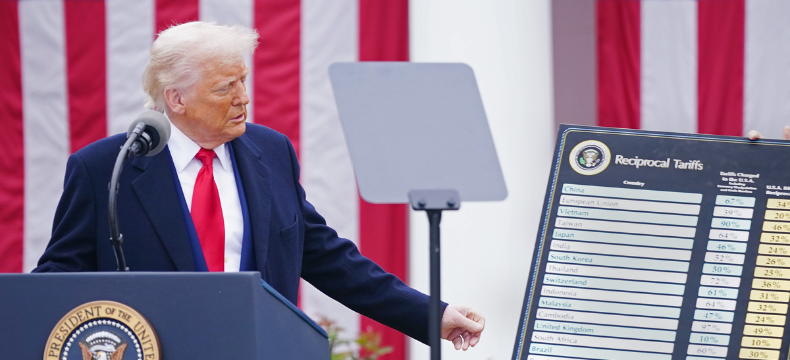President Trump has announced a swathe of tariffs that he hopes will fund income tax cuts and incentivise manufacturing reshoring. In the long run it may deliver positives for the US economy, but the measures taken mean a painful transition period ahead.

Average tariff rate appears higher than expected
Donald Trump’s enthusiasm for tariffs is well known. He describes them as “the most beautiful word in the dictionary.” He sees them as a tool for achieving multiple objectives: a way of raising tax revenue, a way to incentivise reshoring of manufacturing to the US, and a diplomatic weapon to force a change of behaviours.
Having already used threats of tariffs on Canada and Mexico to shore up international borders, today’s announcement is focused on raising taxes and championing US manufacturing.
The details show a 10% base tariff for everyone, but then clear discrimination amongst countries that have, to a varying degree, been perceived to have cheated America. China gets 34%, Vietnam gets 46%, while the EU gets 20%. There is still some confusion on what Canada and Mexico are facing – it could be 25%, it could be zero. Proxying the top 20 of trade partners (contributing 85% of imports into the US), depending on what happens with Canada and Mexico this works out as being in an 18.5-26.5% tariff.
For now, we are assuming this equates to around $600bn of tariffs.
Would you like to know more about prominent global economic happenings? Find out more in our monthly bundle with economic topics on ING THINK.